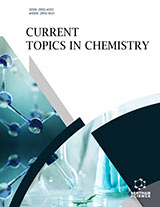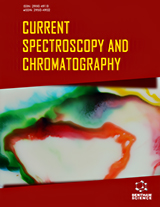Abstract
In this study, we prepared two different type complex groups. One of them is based on Schiff base (A1 , A2 and A3) Cd(II) complexes, another one is β-blockers (acebutolol (ACE), atenolol (ATE) and propranolol (PRO)) Cu(II) complexes. The ligands and their metal complexes were characterized by elemental analyses, mass spectra, 1H(13C) NMR spectra, FT-IR, UV-vis, conductivity measurements and thermal analysis studies. Protonation constants of the ligands and stability constants of their complexes were determined by potentiometric titration method at 25.00±0.02 oC under nitrogen atmosphere and ionic strength of 0.10 M sodium perchlorate. For the Schiff bases, the solvent was 50% DMSO – water; for the β-blockers, it was 50% methanol-water media. The effects of these properties on the observed inhibition of chemiluminescence and the analytical implications of the results are also discussed. Two sets of novel coordination compounds were found to inhibit the intense chemiluminescence reaction in DMSO solution between luminol and dioxygen in the presence of a strong base.
Keywords: Schiff base ligands, Complexes, β-blockers, Stability Constants, Potentiometric studies, Luminol chemiluminescence
Current Analytical Chemistry
Title: Investigations into the Inhibition of Luminol Chemiluminescence by some Novel Metal Complexes
Volume: 6 Issue: 2
Author(s): Aysegul Golcu, R. Alan Wheatley, Havva Demirelli, Mehmet Tumer and Mustafa Dolaz
Affiliation:
Keywords: Schiff base ligands, Complexes, β-blockers, Stability Constants, Potentiometric studies, Luminol chemiluminescence
Abstract: In this study, we prepared two different type complex groups. One of them is based on Schiff base (A1 , A2 and A3) Cd(II) complexes, another one is β-blockers (acebutolol (ACE), atenolol (ATE) and propranolol (PRO)) Cu(II) complexes. The ligands and their metal complexes were characterized by elemental analyses, mass spectra, 1H(13C) NMR spectra, FT-IR, UV-vis, conductivity measurements and thermal analysis studies. Protonation constants of the ligands and stability constants of their complexes were determined by potentiometric titration method at 25.00±0.02 oC under nitrogen atmosphere and ionic strength of 0.10 M sodium perchlorate. For the Schiff bases, the solvent was 50% DMSO – water; for the β-blockers, it was 50% methanol-water media. The effects of these properties on the observed inhibition of chemiluminescence and the analytical implications of the results are also discussed. Two sets of novel coordination compounds were found to inhibit the intense chemiluminescence reaction in DMSO solution between luminol and dioxygen in the presence of a strong base.
Export Options
About this article
Cite this article as:
Golcu Aysegul, Wheatley Alan R., Demirelli Havva, Tumer Mehmet and Dolaz Mustafa, Investigations into the Inhibition of Luminol Chemiluminescence by some Novel Metal Complexes, Current Analytical Chemistry 2010; 6 (2) . https://dx.doi.org/10.2174/157341110790945526
| DOI https://dx.doi.org/10.2174/157341110790945526 |
Print ISSN 1573-4110 |
| Publisher Name Bentham Science Publisher |
Online ISSN 1875-6727 |
 5
5
- Author Guidelines
- Bentham Author Support Services (BASS)
- Graphical Abstracts
- Fabricating and Stating False Information
- Research Misconduct
- Post Publication Discussions and Corrections
- Publishing Ethics and Rectitude
- Increase Visibility of Your Article
- Archiving Policies
- Peer Review Workflow
- Order Your Article Before Print
- Promote Your Article
- Manuscript Transfer Facility
- Editorial Policies
- Allegations from Whistleblowers
- Announcements
Related Articles
-
Editorial (Diabetes, Obesity and Vascular Disease - An Update)
Current Pharmaceutical Design Antipsychotic Polypharmacy
Current Pharmaceutical Design Tissue Protective and Anti-Fibrotic Actions of Suramin: New Uses of an Old Drug
Current Clinical Pharmacology Physiological and Molecular Role of Ranpirnase on Cancer Treatment
Current Cancer Therapy Reviews Immunomodulatory Effects of Medicinal Plants used for Vitiligo in Traditional Persian Medicine
Current Drug Discovery Technologies Preconception Care for Diabetic Women: Background, Barriers, and Strategies for Effective Implementation
Current Diabetes Reviews Patient Perspectives in OMERACT Provide an Anchor for Future Metric Development and Improved Approaches to Healthcare Delivery in Connective Tissue Disease Related Interstitial Lung Disease (CTD-ILD)
Current Respiratory Medicine Reviews DNA Methylation and MicroRNA-Based Biomarkers for Risk of Type 2 Diabetes
Current Diabetes Reviews Proteins Structures in Leishmania Amastigotes for Clinical Remission of Psoriasis
Current Proteomics Post-stroke Movement Disorders: Clinical Manifestations and Pharmacological Management
Current Neuropharmacology Epoxyeicosatrienoic Acid Analogs and Vascular Function
Current Medicinal Chemistry The Association between Metabolic Syndrome and Serum Levels of Adiponectin and High Sensitive C Reactive Protein in Gorgan
Endocrine, Metabolic & Immune Disorders - Drug Targets Nonalcoholic Fatty Liver Disease and Cardiovascular Disease
Current Pharmaceutical Design The Role of Target Therapy in the Treatment of Gastrointestinal Noncolorectal Cancers: Clinical Impact and Cost Consideration
Current Cancer Drug Targets Editorial (Thematic Issue: New Approaches to the Treatment of Alzheimer's Disease)
Current Topics in Medicinal Chemistry Cardiovascular Toxicity from the Perspective of Oxidative Stress, Electron Transfer, and Prevention by Antioxidants
Current Vascular Pharmacology Downregulation of Membrane-bound Angiotensin Converting Enzyme 2 (ACE2) Receptor has a Pivotal Role in COVID-19 Immunopathology
Current Drug Targets Clozapine Safety, 35 Years Later
Current Drug Safety Improving Red Blood Cell K-Uptake and its Impact on O2/CO2 Exchange, and NO-Generation in Microvascular CHD: A Novel Therapeutic Approach
Recent Patents on Cardiovascular Drug Discovery Renal and Hepatic Transporter Expression in Type 2 Diabetic Rats
Drug Metabolism Letters


























